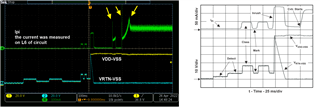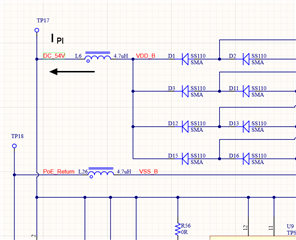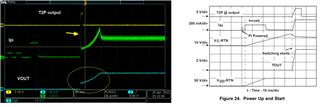Hi
Please help to check the left waveform of my PCB
1.
There are many inrush current on I PI when PSE type 2 injector plug in.
Is it normal? Is the level reasonable ?Or how can I improve the pulse?


2.
Please see the left waveform.I caught Ipi and VOUT 15V
Ipi is same as question 1 ,and I found that VOUT rise is not smooth like the waveform of spec (right picture)
Is there any risk of the waveform of VOUT?

Below is our PD circuit. (VOUT is 15V)
Thanks


